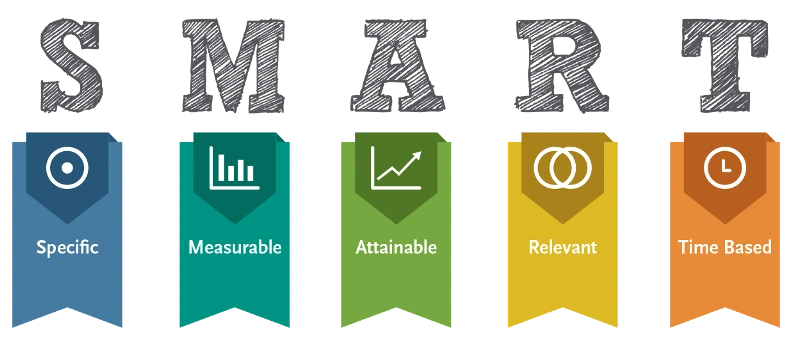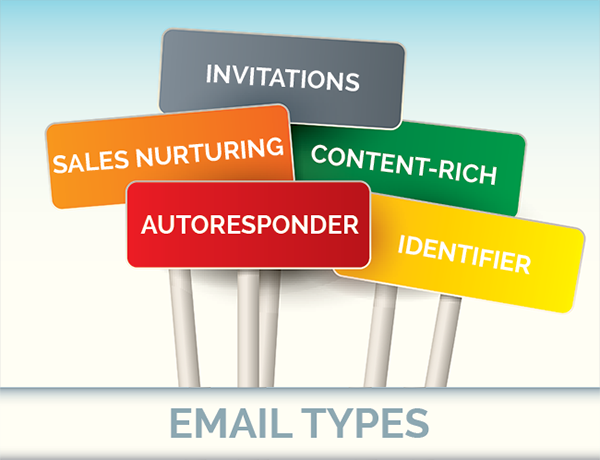With over 269 billion emails being sent every day (The Radicati Group Inc, 2017), and an impressive forecast of 2.9 billion email users by 2019 (Statista, 2018), its no surprise that 59% of B2B companies believe that email marketing is their most influential marketing channel (Gregory, 2015). However, this incredible potential audience reach means nothing without a strategic email marketing campaign plan in place, here are a few tips to get you started!
- Set Your Objectives

Source: Inspius (2018)
First and foremost, in order to create a successful email campaign, you need to set your objectives. What do you want this campaign to achieve? By when? How?
A SMART way of setting your objectives is to use Doran (1981)’s SMART objective acronym. In order to set realistic goals for your email campaign, you must ensure that your objectives meet the five requirements of the SMART acronym; specific, measurable, attainable, relevant and time-based. For example, if you plan on using email marketing to increase awareness of a new product range, how will you make the content relevant and engage the audience? How will you measure the initiative’s effectiveness? KPI’s? Metrics?
2. Choose Your Email Type

Source: ReachMarketing.com (2018)
When designing your email, its important to consider what type of email is the most appropriate for your chosen objective.
Email types include Engagement (e.g welcome or tutorial emails), Transactional (e.g shopping bag abandonment reminders or time-sensitive promotional emails) or even a Newsletter.
If you’re having trouble deciphering what type of email is right for your campaign, you could always define what message you want the email to convey beforehand. According to Mullen and Daniels (2009) there are only five possible email messages; awareness, consideration, conversion, product usage and retention and loyalty.
3. Audience Analysis

Source: IRMConnects.com (2017)
Before even beginning to think about content and design, you need to know your audience. By gaining an understanding and deeper insight into your audience, you will be able to target and position your emails better; this can be done by conducting a research analysis.
There are an endless amount of methods to conduct your analysis, such as Google Analytics, Newsletter sign up demographics or even Facebook Insights.
Google Analytics is a personal favourite of mine due to its free and easy-to-use manner. This tool not only tells you all you need to know about your target demographic, but also provides an insight into who your customers are and what interests them! (Hall, 2018).
4. Relevant Content

Source: AltusHost.com (2018)
Now that you know your audience, you need to create content that is relevant to their interests. What is going to catch their attention? Why should they open YOUR email? What makes it unique? With billions of emails sent everyday, you need to ensure that your email’s title, tagline, opening line and images are enough to engage them enough to want to read it.
Monesta (2016) offers some tips on making your content stand out from the crowd, suggesting techniques such as the use of videos or gifs, using personalisation, featuring any promotions or discounts and the use of a brand based colour palette.
5. Monitor your progress

Source: Hennel (2014)
The last step of ensuring email campaign success is to monitor your progress. This will not only give you an insight into what you’re doing right, but also what you’re doing wrong and how you can improve. As famously stated by management guru, Peter Drucker, “You cannot improve what you don’t know how to measure” (Ganasinni, 2017).
Some useful metrics include:
- Delivery rates.
- Open rates.
- Click-through rates.
- Conversion rates.
Risky Business
As with every great digital marketing channel, email marketing also has its fair share of risks, here are the two biggest threats to your campaign:
- Spam – One key risk businesses fail to recognise when developing email campaigns, is the risk of buying a mailing list. Email recipients who aren’t subscribed to your business are able to report you for spam, which in turn can lead to your email address being blacklisted or banned as you’re failing to comply to the CAN-SPAM Act.
2. Reputation Damage – As every business owner knows, brand reputation is everything. Key mistakes to avoid when designing your campaign include; misleading or deceptive titles and subject matters and the use inappropriate or offensive language or images. It also helps to give recipients the option to opt-out from receiving emails.
If you’re thinking of starting your own email campaign, take a look at these articles for more inspiration:
References
AltusHost. (2018). Creating the Right Type of Content That Will Suit Your Needs. [online] Available at: https://www.altushost.com/creating-the-right-type-of-content-that-will-suit-your-needs/ [Accessed 10 Feb. 2018].
Doran, G. T. (1981). “There’s a S.
M.A.R.T. Way to Write Management’s Goals and Objectives”, Management Review, Vol. 70, Issue 11, pp. 35-36.
Ganasinni, M. (2017). Email Metrics: Top 10 KPIs for Email Success – MailUp Blog. [online] MailUp. Available at: https://blog.mailup.com/2017/01/email-metrics/ [Accessed 14 Feb. 2018].
Gregory, M. (2015). 9 sizzling marketing stats from this summer. [online] Emma. Available at: https://content.myemma.com/blog/9-sizzling-marketing-stats-from-this-summer [Accessed 7 Feb. 2018].
Hall, S. (2018). How to Run a Successful Email Marketing Campaign (Step by Step). [online] OptinMonster. Available at: https://optinmonster.com/how-to-run-a-successful-email-marketing-campaign/ [Accessed 9 Feb. 2018].
Hennel, P. (2014). Manufacturing Metrics that Matter Most. [online] Transportation Management Company. Available at: http://cerasis.com/2014/07/16/manufacturing-metrics/ [Accessed 14 Feb. 2018].
Infusionsoft. (2018). Email Marketing Best Practices. [online] Available at: https://www.infusionsoft.com/email-marketing-best-practices [Accessed 7 Feb. 2018].
IRM Connects. (2017). Audience Analysis: A Technique to help with Business Change. [online] Available at: http://www.irmconnects.com/audience-analysis-technique-help-business-change/ [Accessed 9 Feb. 2018].
Montesa, M. (2016). 18 Tried-And-True Ways to Improve Your Email Content. [online] AWeber. Available at: https://blog.aweber.com/email-marketing/improve-email-content.htm [Accessed 11 Feb. 2018].
Mullen, J. and Daniels, D. (2009). Email Marketing: An Hour A Day. Indianapolis, Ind.: Wiley Publishing., p.6.
Reach Marketing. (2018). 5 email types that define your marketing automation strategy. [online] Available at: https://www.reachmarketing.com/the-5-email-types-that-define-your-marketing-automation-strategy/ [Accessed 9 Feb. 2018].
Statista. (2018). Number of active e-mail accounts worldwide 2019. [online] Available at: https://www.statista.com/statistics/456519/forecast-number-of-active-email-accounts-worldwide/ [Accessed 7 Feb. 2018].
The Raticati Group Inc (2017). Email Statistics Report, 2017-2021. Palto Alto, CA: The Radicati Group Inc, p.2.

